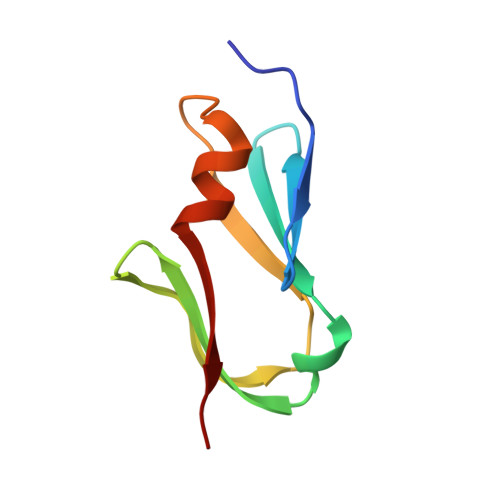Antiviral signalling by a cyclic nucleotide activated CRISPR protease.
Rouillon, C., Schneberger, N., Chi, H., Blumenstock, K., Da Vela, S., Ackermann, K., Moecking, J., Peter, M.F., Boenigk, W., Seifert, R., Bode, B.E., Schmid-Burgk, J.L., Svergun, D., Geyer, M., White, M.F., Hagelueken, G.(2023) Nature 614: 168-174
- PubMed: 36423657
- DOI: https://doi.org/10.1038/s41586-022-05571-7
- Primary Citation of Related Structures:
7QDA, 8B0R, 8B0U - PubMed Abstract:
CRISPR defence systems such as the well-known DNA-targeting Cas9 and the RNA-targeting type III systems are widespread in prokaryotes 1,2 . The latter orchestrates a complex antiviral response that is initiated through the synthesis of cyclic oligoadenylates after recognition of foreign RNA 3-5 . Among the large set of proteins that are linked to type III systems and predicted to bind cyclic oligoadenylates 6,7 , a CRISPR-associated Lon protease (CalpL) stood out to us. CalpL contains a sensor domain of the SAVED family 7 fused to a Lon protease effector domain. However, the mode of action of this effector is unknown. Here we report the structure and function of CalpL and show that this soluble protein forms a stable tripartite complex with two other proteins, CalpT and CalpS, that are encoded on the same operon. After activation by cyclic tetra-adenylate (cA 4 ), CalpL oligomerizes and specifically cleaves the MazF homologue CalpT, which releases the extracytoplasmic function σ factor CalpS from the complex. Our data provide a direct connection between CRISPR-based detection of foreign nucleic acids and transcriptional regulation. Furthermore, the presence of a SAVED domain that binds cyclic tetra-adenylate in a CRISPR effector reveals a link to the cyclic-oligonucleotide-based antiphage signalling system.
- Institute of Structural Biology, University of Bonn, Bonn, Germany. back2crispr@gmail.com.
Organizational Affiliation:



















